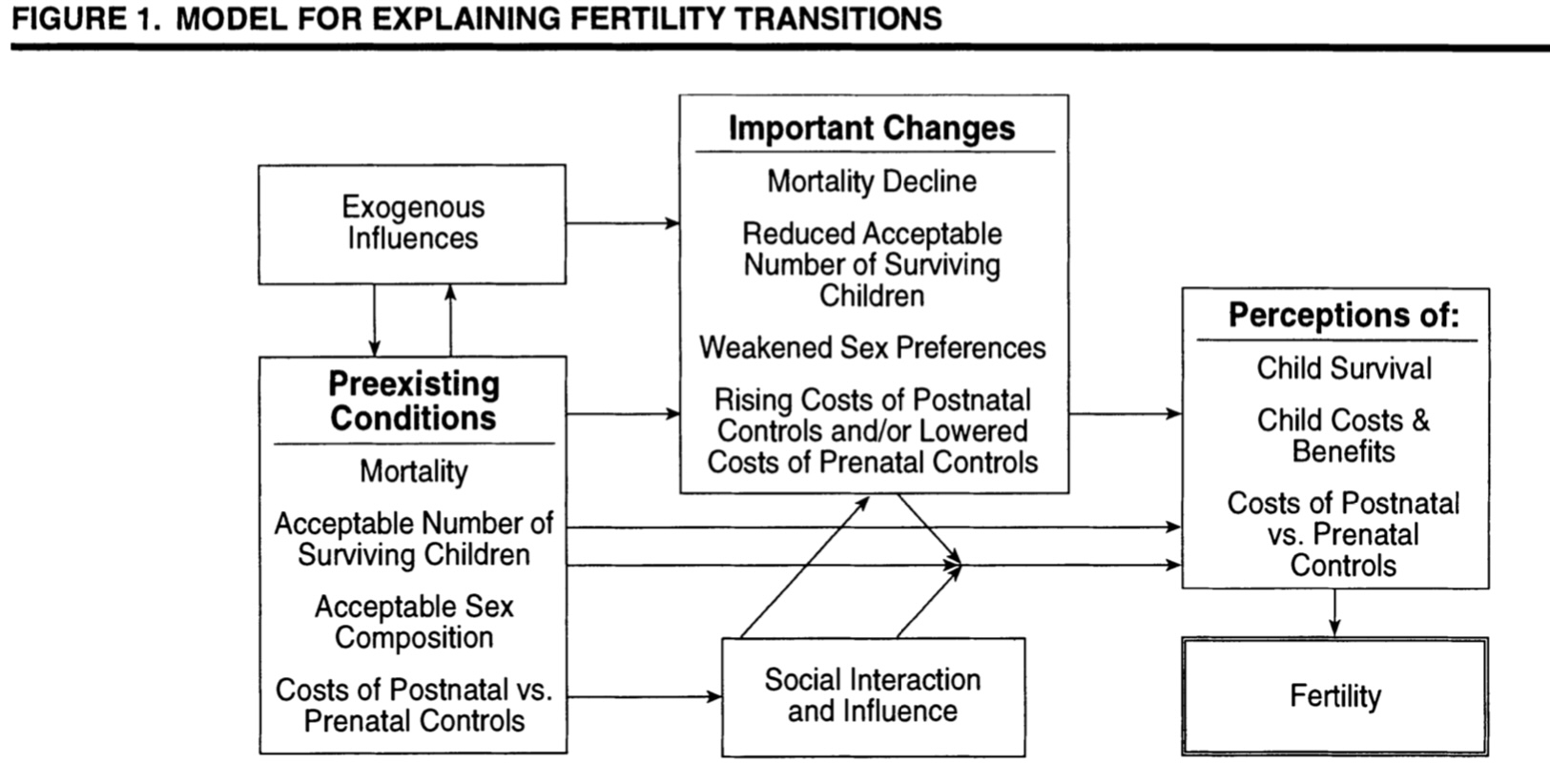Mason 1997
Major Theories
Demographic transition theory: fertility decline is caused by industrialization + urbanization
- Plausible on a millenium scale
- Incomplete theory
Classic transition theory with an addition: modernization + shift in values toward individualism and self-fulfillment
- Doesn’t fit with developing countries
Wealth flows: fertility decline is caused by the emotional nucleation of the family, triggered by economic + cultural forces
- Children = net economic beneficiaries of family life
- Applicable to Sub-Saharan Africa
- Doesn’t work in East Asia and Western Europe
Neoclassical microeconomic theory of fertility: 3 proximate determinants of couples fertility choices
- Cost of children vs. other goods
- Income
- Preferences for children vs. other forms of consumption
- Doesn’t account for environmental + institutional conditions
Easterlin’s framework: neoclassical microeconomic theory of fertility + sociological variable → supply of children
- Supply for children
- Demand for children
- Costs of fertility regulation
- Doesn’t account for institutional conditions
Ideational theory: timing of fertility transition depends on the diffusion of information + new social norms about birth control
- Doesn’t apply to Africa
- Incomplete
Four Errors in Our Thinking
1. Assuming that all transitions have the same cause
- Existence of potentially important influences on fertility in only some times or places
- Diffusion of information and ideas about fertility limitation can influence reproductive behavior in the absence of major structural changes
- There is enormous demographic + social variation across pre-transitional populations
2. Ignoring mortality decline as a precondition of fertility behaviour decline
- Without a mortality decline, a fertility decline is highly unlikely
- Recent theories tend to ignore this pre-condition because of particular findings
3. Assuming that the regulation of fertility is fundamentally different in pre-transitional and post-transitional populations
- Natural fertility: fertility that is socially controlled but not controlled by individuals on a parity-specific basis
- Recognizing the historical continuity of family planning
- Stop stereotyping all pre-transitional populations as mindless puppets of culture
4. Focusing on a decadal time scale
- Decadal time scale = misleading results
- Princeton European Fertility Project: assumed that the effects of economic modernization on fertility would be felt immediately regardless of other conditions
- We need to test our theories on a lengthier or looser scale than the decade
Toward a Better Theory
Important facts
- Fertility transitions occur when conditions are combined
- 1st country to undergo a fertility transition experienced changes that encourage fertility limitation and other countries are influenced by this 1st country
- The speed of influences travelling through regions varies on many factors
- Mortality decline is a necessary condition but not a sufficient condition
- The number of surviving children varies across pre-transitional populations
- Parents use offspring control when the number of children exceeds the family’s capacity to accommodate them
- The forms of control available to parents
New models must be ideational and interactive
Model for explaining fertility transitions:
